Record-breaking giants: the biggest fish ever caught by humans
Colossal catches that made history
When it comes to fishing, landing the biggest fish ever can feel like the ultimate achievement. From freshwater fish to sharks, the thrill of catching a giant is unparalleled. Here are some of the most staggering records of fish ever caught, spanning decades and across oceans and rivers.
One of the most talked-about records is Ken Fraser's legendary catch of a bluefin tuna in 1979, weighing a staggering 1,496 pounds (678.58 kg) off the coast of Nova Scotia, Canada. This catch still holds the record for the largest bluefin tuna ever recorded. Fraser's bait-and-tackle technique remains a subject of fascination for many anglers even today.
The monstrous capture of a great white shark by Alfred Dean in 1959 off the coast of Ceduna, Australia, is another example of fishing glory. Dean's great white weighed an unbelievable 2,664 pounds (1,208 kg) and measured 16 feet long. This catch turned Dean into a fishing legend overnight.
In Europe, the Mekong giant catfish reigns supreme. In 2005, a male shark weighing 646 pounds (293 kg) was caught in northern Thailand. This catch was a world record for the largest freshwater fish ever documented.
Then there's the incredible story of the largest bony fish, the ocean sunfish. In 1996, an immense specimen weighing 5,070 pounds (2,300 kg) and measuring 10 feet long was snagged off Kamogawa, Japan. This remains the heaviest bony fish on record.
When discussing phenomenal catches, we can't ignore the international game fish association (IGFA), the governing body that rigorously maintains these records. The IGFA has been a cornerstone in documenting and verifying the biggest catches, ensuring that the feats of these anglers are celebrated and remembered for years to come.
From the icy waters of Greenland, where the Greenland shark lumbers, to the bustling coastlines of Florida, where massive blue marlins are struck, record-breaking giants continue to captivate the fishing community worldwide. For more tales of astonishing catches, check out our deep dive into recreational fishing for barracuda.
The great white shark: the king of the ocean's biggest predators
The legendary great white shark captures
The great white shark is nothing short of a marvel in the marine world. Standing at the apex of the ocean's food chain, this predator has fascinated anglers and marine biologists alike. With its impressive size and power, the great white shark has often been the subject of legendary fishing tales.
One of the largest fish ever caught is the great white shark caught by Alfred Dean off the coast of Ceduna, Australia. On April 21, 1959, Dean set a still-unbroken record by hauling in a 2,664-pound (1,208 kg) great white. This incredible fish measured 16 feet (4.88 meters) in length. According to the International Game Fish Association (IGFA), this catch still holds the record for the heaviest weight ever captured on rod and reel.
Long-standing records
Dean's catch broke the previous record set in 1955 by another great white shark captured off Cojimar, Cuba, which weighed 2,500 pounds (1,133 kg). These numbers aren't just dry statistics; they represent monumental achievements in the world of big-game fishing. Such catches involve not only a battle of strength but also a test of skill, patience, and the quality of gear used.
But what about the largest great white shark ever observed? That would be Deep Blue, a female great white estimated to be about 20 feet (6.1 meters) long and over 5,000 pounds (2,268 kg) in weight. While not caught, she has become a symbol of the awe-inspiring size and power these animals possess.
Expert insights
Renowned marine biologist Dr. Chris Lowe from California State University notes, "The great white shark is a fish of extremes – it's one of the oldest and most successful predators in the ocean. Each catch provides invaluable data that helps us understand more about their behavior and ecology."
Ken Fraser, another notable angler, says, "Catching a great white is the pinnacle of any angler's dream. It requires extraordinary endurance and the best possible tackle." Fraser himself holds the record for the largest bluefin tuna ever caught, another giant of the ocean, adding to his credibility in the big-game fishing arena.
The importance of conservation
In recent years, there has been a growing awareness regarding the conservation of these majestic creatures. Overfishing and the decline of shark populations have led many to call for more sustainable fishing practices. Several organizations, including the IGFA, now promote catch-and-release practices to ensure the future of these incredible fish.
As larger and more powerful sharks continue to be discovered and studied, the enduring legacy of great white sharks remains a vital part of marine ecology and big-game fishing lore. Every record-breaking catch serves to deepen our understanding and respect for these awe-inspiring giants.
Freshwater titans: the largest fish you can find in rivers and lakes
Giant freshwater stingray: the behemoth of waters
When we think of the largest freshwater fish, the giant freshwater stingray immediately comes to mind. Weighing up to 660 pounds, this colossal creature can grow up to 16 feet long. Often found in the rivers of Southeast Asia, particularly in Thailand, the giant freshwater stingray is a prized catch. Many anglers dream of the ultimate thrill of the fight with this incredible fish.
Mekong giant catfish: record-breaking freshwater giants
The Mekong giant catfish, native to the Mekong River in Southeast Asia, holds the title of the largest freshwater fish ever caught. In 2005, a massive specimen weighing 646 pounds was captured in northern Thailand. This jaw-dropping catch has been celebrated and recorded by the International Game Fish Association (IGFA). However, these fish are now critically endangered, making conservation efforts crucial to their survival.
Arapaima: the amazon's freshwater titan
Another colossal freshwater species, the Arapaima, hails from the Amazon River. This bony fish can reach lengths of over 10 feet and weigh up to 485 pounds. Known for its distinct appearance and incredible size, the Arapaima is a sought-after species among anglers. Recent studies and fishing techniques continue to explore the best methods for catching this Amazonian giant.
Alligator gar: north america's ancient angler
The Alligator Gar is one of North America's largest freshwater fish, capable of growing up to 10 feet in length and weighing over 300 pounds. This prehistoric-looking fish is found in the southern United States and is known for its bony scales and long, tooth-filled snout. Anglers often seek out the Alligator Gar using specialized techniques due to its tough armor and elusive nature.
Sturgeon: Europe's mighty freshwater warrior
In the waters of Europe, the Sturgeon reigns supreme as one of the biggest freshwater fish. Growing over 18 feet long and weighing up to 2,200 pounds, these giants are impressive finds. In 2008, a White Sturgeon measuring 12 feet 4 inches and weighing 1,100 pounds was caught in the Fraser River in Canada, showcasing the sheer size these fish can achieve. Conservation remains a significant concern for sturgeon populations, given their value and the intensive fishing pressures they face.
The IGFA's role in documenting the biggest fish catches
IGFA: the gold standard for documentation
When you talk about the biggest fish ever caught, one name invariably comes up: the International Game Fish Association (IGFA). Established in 1939, the IGFA holds the authoritative records for game fish captures, ensuring that every catch is verified, credible, and above all, inspiring.
The verification process
The IGFA's verification process is meticulous. A fish isn't just measured; its weight and length are verified using certified scales, and the gear used to catch it is scrutinized down to the last tackle. For a fish to make it onto the IGFA's record books, it’s like winning the lottery of the fishing world.
For instance, when Ken Fraser hauled in his legendary 1,496-pound bluefin tuna off the coast of Nova Scotia, Canada in 1979, it was the IGFA that validated his achievement. Today, Fraser's record still stands, a testament to the rigorous standards the IGFA applies.
Why IGFA's role is crucial
The IGFA doesn’t just keep records; it educates enthusiasts about sustainable angling practices. Overfishing is a real danger to our oceans, and the IGFA's guidelines ensure that while we pursue the giant fish, we respect these incredible species and their habitats.
The organization is based in Dania Beach, Florida, but its impact resonates worldwide. From Peru to Thailand and Europe to Greenland, IGFA’s influence helps shape responsible fishing practices globally.
Legendary catches the IGFA has documented
Consider Alfred Dean’s epic conquest in 1959 when he reeled in a massive 2,664-pound great white shark. Off of Cabo Blanco, Peru, this catch remains the heaviest fish ever caught on a rod and reel, WWF-exciting anglers the world over.
Then there's the fascinating story of the Mekong giant catfish—one of the largest freshwater fish ever documented by the IGFA. Caught in Thailand, these river giants can grow up to 10 feet long and are among the rarest and most endangered species the organization monitors.
Controversies and debates
In some cases, the road to getting a record recognized can be rocky. There are debates on fish stress and mortality rates associated with catch-and-release practices, and some records have faced scrutiny over potential rule violations.
Take the case of Zack Keszey, who caught what appeared to be a record-breaking black marlin, but failed an IGFA certification because of a controversial call on the legality of his tackle. These instances highlight the importance of rigorous rules and the drama that can accompany record-chasing escapades.
Final thoughts about IGFA’s role
The IGFA stands as a lighthouse in the vast sea of angling, illuminating the path for ethical and thrilling fishing. Its role in documenting our catches ensures that our stories and legends are preserved for future generations.
Famous fishermen and their legendary catches
Legendary anglers and their unforgettable catches
When discussing the biggest fish ever caught, we can't overlook the famous figures who have etched their names in angling history. These individuals demonstrate exceptional skill, determination, and a bit of luck, making them heroes in the realm of monumental catches.
Ken Fraser and his 1,496-pound bluefin tuna
One of the most iconic names in the fishing world is Ken Fraser. In 1979, off the coast of Nova Scotia, Canada, Fraser hooked a massive bluefin tuna weighing 1,496 pounds. This giant remains the largest bluefin tuna ever caught on rod and reel. Fraser's tuna undoubtedly set the bar for biggest fish enthusiasts worldwide.
Alfred Dean's great white shark
Another legendary catch involves Alfred Dean, an Australian angler. In 1959, Dean caught a 2,664-pound great white shark in Ceduna, Australia. This colossal shark is the heftiest fish ever recorded by the International Game Fish Association (IGFA). Dean's catch exemplifies the sheer size that some of these marine giants can reach.
Noteworthy mentions
While Fraser and Dean's catches are legendary, other significant figures also find their place in history:
- Jack Herbst: In 1953, Jack set the record with a 1,560-pound black marlin, caught off Cabo Blanco, Peru.
- What's more: In 2005, angler Nong Khong of Thailand reeled in a 646-pound mekong giant catfish, the largest freshwater fish ever caught.
Expert insights
As per IGFA historian Mike Krupa, "These fishermen and their outstanding catches serve as cornerstones for our understanding of what is possible in sport fishing." Indeed, their feats not only highlight personal achievement but also push the boundaries of what anglers worldwide set as their targets.
Challenges of pursuing the giants
Targeting these mammoth species necessitates robust and specialized gear, coupled with in-depth knowledge and perseverance. The weather conditions, water bodies, and physical demands make reeling in these gigantic fish an extraordinary accomplishment.
The challenges of hauling in a record-breaking fish
The sheer power of giants
Landing a record-breaking fish isn't just about skill – it's a testament to the angler's endurance, patience, and often, sheer brute strength. Many of these aquatic behemoths possess such immense power that the battle can last for hours. Ken Fraser, who holds the record for the largest bluefin tuna ever caught – a 1,496-pound giant off the coast of Nova Scotia in 1979 – spent 45 grueling minutes battling his catch.Battling the forces of nature
The ocean is an unpredictable adversary. Strong currents, unexpected weather changes, and the physical nature of fighting a gigantic fish mean that the angler is in for a tough time. Alfred Dean, who famously caught a 2,664-pound great white shark off the coast of Australia in 1959, highlighted in an interview the unpredictability of the ocean. Nature, it seems, has a way of testing even the most seasoned fishermen.Proper gear: your best ally
Having the right equipment can make all the difference. High-quality rods, reels, and lines are essential when you're battling fish that weigh hundreds – or even thousands – of pounds. Many record-breakers were landed with specialized gear designed to withstand pressures that would snap ordinary fishing tackle like a twig. The International Game Fish Association (IGFA) often notes the type of gear used in these records, underscoring its importance.The role of teamwork
While solo catches are often celebrated, many record-breaking fish are the result of teamwork. Crewmembers play a crucial role, whether they're helping to maneuver the boat, manage the line, or coordinate with the angler. This camaraderie and collective effort are vital when the stakes are high.Mental and physical resilience
Beyond physical endurance, catching a record-breaking fish requires significant mental fortitude. The psychological pressure, the fear of losing the fish at the last moment, and the sheer length of the battle can test one's mental limits. Many experienced anglers, such as those who've caught massive Greenland sharks or Mekong giant catfish, recount the mental toughness required to see the fight through to the end.The importance of preparation
Preparation isn't just about having the right gear. It's about scouting the right locations, understanding the habits of the species being targeted, and often, investing countless hours without guarantee of a catch. Legendary fishermen like Ken Fraser and Alfred Dean spent years honing their skills, understanding their prey, and waiting for the right moment to strike. The challenges are immense, but the rewards – both personal and for the sport – are priceless.Debates and controversies in the world of record fish
Debates about accidental catches
One of the biggest debates in the world of record fish surrounds the legitimacy of accidental catches. There have been instances where an angler's bait, intended for a smaller species, ends up luring in a giant like a massive blue marlin or giant freshwater stingray. The International Game Fish Association (IGFA) constantly faces scrutiny about whether these catches should count toward records.
Controversies over bait and gear
The type of bait and gear used for fishing record-setting giants often sparks heated debates. Some anglers argue that modern technology and advanced gear give certain fishermen an unfair advantage. Traditionalists believe that catching notable giants like the great white shark or the Atlantic blue marlin using only the simplest rods and reels demonstrates true angling prowess. Ken Fraser’s 1,496-pound Atlantic bluefin tuna, caught off the coast of Nova Scotia in 1979, stands as a prime example of a classic catch that still dominates debate circles.
Disputed records and reporting accuracy
The authenticity of reported sizes and weights can also lead to disagreements. When a fisherman claims to have caught a 20-foot long Greenland shark or a 660-pound freshwater Mekong giant catfish, the world of angling holds its breath, waiting for verification. The IGFA has a stringent process for verifying records to prevent inflated claims that stir controversy.
Environmental and ethical discussions
Ethics and environmental concerns are significant points of contention. Many conservationists argue that targeting such large species can negatively impact their populations. The debate is especially fierce around species like the great white shark and the giant freshwater stingray, forcing the fishing community to balance sport and ecology responsibly.
Famous disputes in angling history
One of the most famous angling disputes involved Alfred Dean’s 2,664-pound great white shark caught off the coast of Australia in 1959, which still holds the record for the largest fish ever caught on rod and reel. Some fishermen argue that the use of bait from whale blubber should disqualify the catch, while others defend the traditional methods employed at that time.
Regulatory changes and debates
To minimize controversies and promote fairness, the IGFA often revises regulations on tackle record and catch-and-release practices. These changes aim to reflect evolving fishing techniques and contribute to sustainable fisheries management. Still, as with any rule-change, debates arise among enthusiasts about the impact and necessity of these amendments. Anglers worldwide must remain updated on these modifications to ensure their catches comply with the latest standards.
Fishing gear and techniques for targeting giant fish
Gearing up for the giants: essential fishing gear
When it comes to targeting the biggest fish ever caught, having the right equipment is crucial. Anglers aiming for record-breaking giants need to be equipped with robust rods, reels, and lines that can withstand the immense pressure from these behemoths of the water. Take the great white shark, for instance; Alfred Dean's legendary catch weighing 2,664 pounds required a heavy-duty rod and reel combination designed for extreme strength and durability.
Choosing the right tackle for monster fish
For those who dream of hauling in a blue marlin, tiger shark, or even a mekong giant catfish, selecting the appropriate tackle is vital. Tackle typically includes heavy rods, high-capacity reels, and braided lines that provide both strength and flexibility. Ken Fraser's record-setting bluefin tuna, weighing an impressive 1,496 pounds, was caught off the coast of Nova Scotia using this kind of gear.
Techniques for landing giants
Landing the biggest game fish isn’t just about having the right gear; it also involves using the best techniques. One effective method for capturing larger fish is trolling, a technique where bait or lures are slowly dragged behind a boat. This method has proven successful for catching species like the pacific blue marlin and black marlin in places like Hawaii and Cabo Blanco, Peru.
Case study: the great white shark
One of the most iconic cases was the 2,664-pound great white shark caught by Alfred Dean off the coast of Australia. This catch wasn’t just a test of physical strength but also knowledge of the fish’s behavior. Dean used a combination of live bait and lures to attract the giant predator, coupled with a sturdy rod and reel setup that handled the enormous strain during the intense battle.
Expert insights on catching record fish
Many experts, like those from the International Game Fish Association (IGFA), emphasize the importance of preparation and patience. According to IGFA records, anglers who meticulously prepare their gear and study their targeted species’ habits have a higher success rate in catching record fish. As an example, the giant freshwater stingray caught in Thailand weighed a mind-blowing 885 pounds and required excellent tactics and impeccable gear.

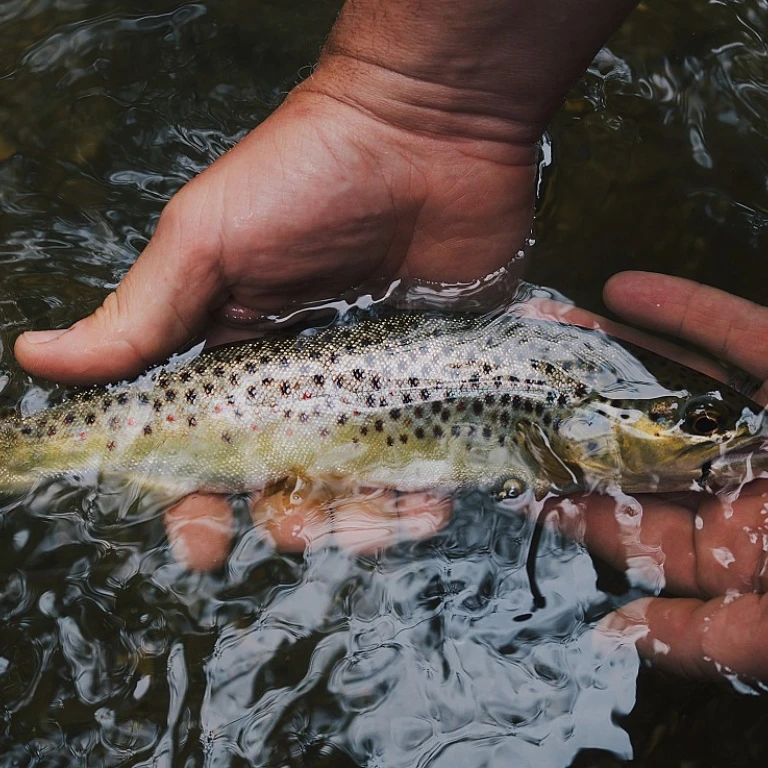
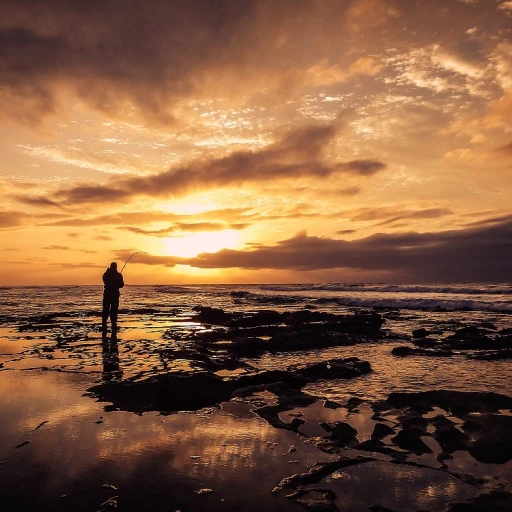
-large-teaser.webp)


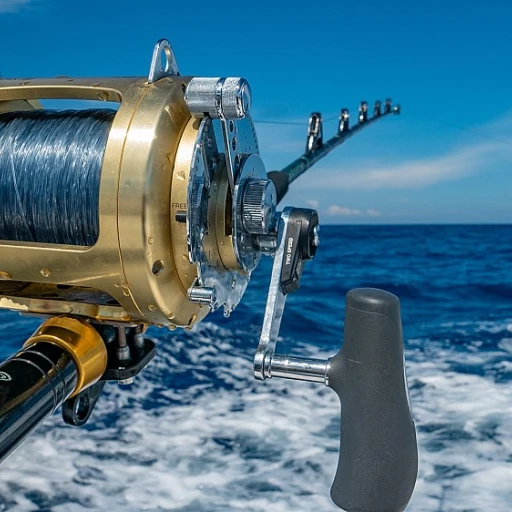
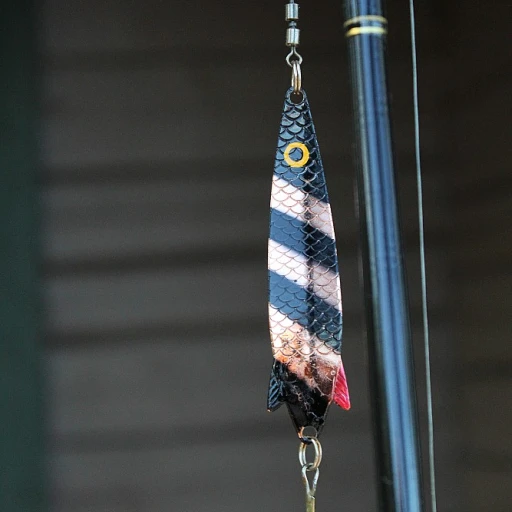

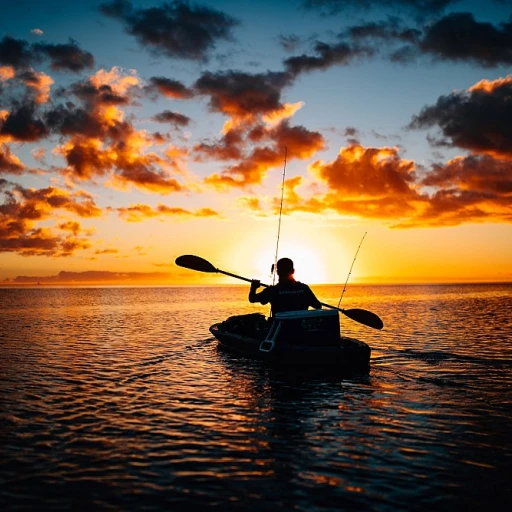
-large-teaser.webp)
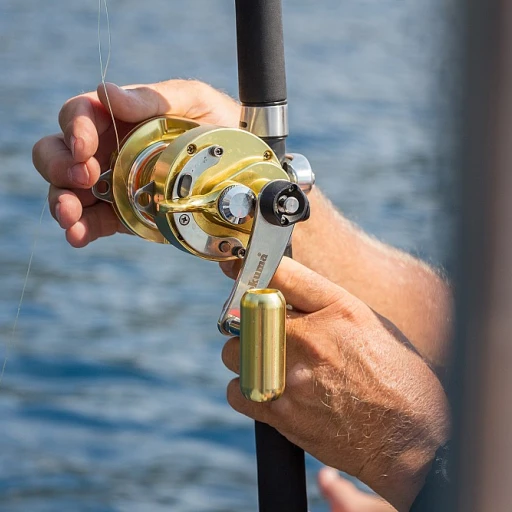
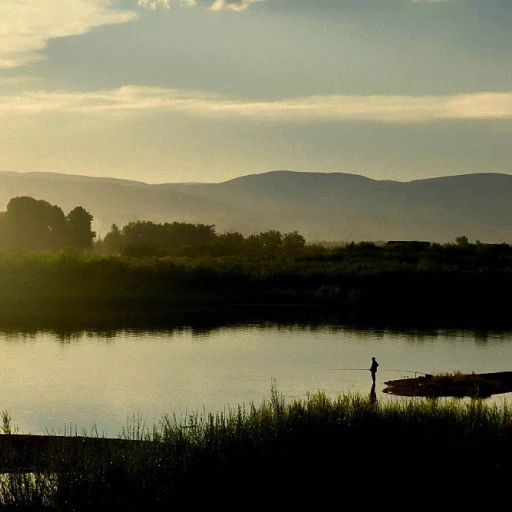
-large-teaser.webp)